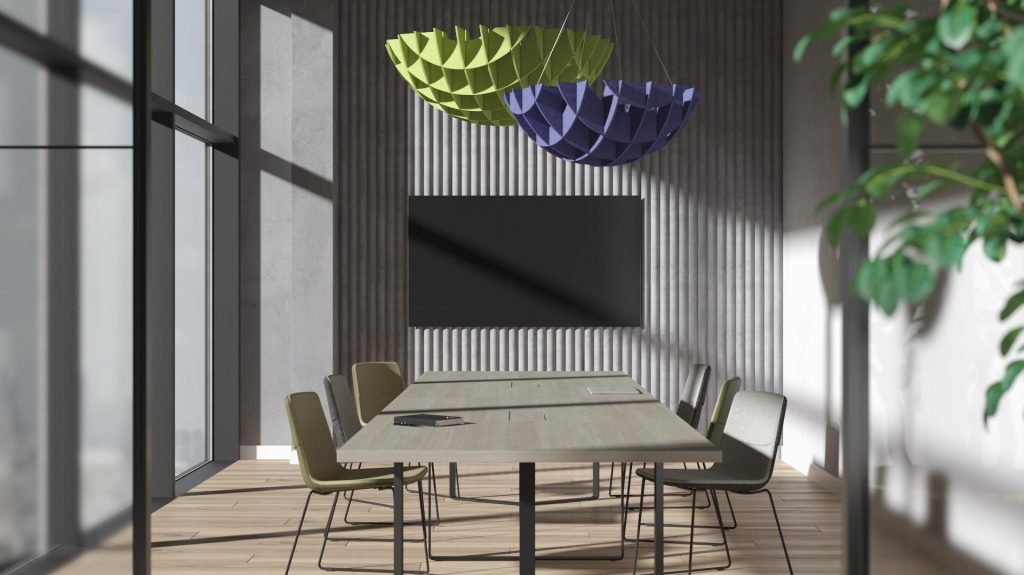Hybrid Office Design: Making Offices for Flexible Workers
The way we work in office spaces has changed dramatically moving from working in-person to a more hybrid model, providing employees with the flexibility of working at home or in the office. Hybrid workplace design has seen the development of innovative spaces that cater for a range of different working solutions to meet the demand for a more flexible way of working.
The hybrid office space isn’t a new concept but has recently become the norm rather than the exception, placing well-being as a key priority as employees move seamlessly between home and office work. This post looks at exactly what hybrid office design and planning is and how it is the future of office space.

What is a hybrid office?
Hybrid office design integrates face-to-face collaboration with remote working enabling employers to create spaces that promote well-being and allow teams to work in a way that works best for them. Research shows that over 80% of organisations have a hybrid working model so it’s important your physical office space supports this type of working.
A hybrid office allows a range of working styles that promote a sense of belonging for all team members, whether they are remote or in-person workers or a combination of both. Different spaces will require different types of furniture and arrangements to create flexible workspaces that create a hybrid work environment.
Catering to the needs of all workers means that modern office design includes a range of different zones and spaces. Social, meet, focus, and balance are the cornerstones of a purposeful hybrid office environment that allows teams and individual employees to work in a way that gives them a good work-life balance that improves productivity and creativity.
The advantages of hybrid office design
Hybrid office design integrates remote workers with those who prefer to work face-to-face in a physical office, allowing them to work effectively together as if they were all in the same room. Some of the many advantages to this style of work include:
- Enhanced well-being. Hybrid working supports employee satisfaction, happiness, and well-being which creates job satisfaction and a feeling of being valued.
- Improved performance and productivity. If workers feel valued and enjoy their working environment, they are likely to be more focused and productive.
- Enhanced recruitment and retention. A happy workforce is less likely to want to leave their employment. Research shows that many workers want the flexibility of being able to work from home and in the office and would not consider applying for a role that provides hybrid working.
- Improved space utilisation. A hybrid office layout uses the available space effectively with things like hot desks and a booking system increasing efficiency and the need for smaller office spaces which helps to reduce overheads.
How can offices be designed to be hybrid?
Hybrid offices require a different style of design so that they encompass the needs of different working models. The office space needs to be able to accommodate in-office work, as well as remote and hybrid working so that teams can communicate effectively wherever they are working so ensuring the right tools and technology is available is vital.

So, what does a hybrid workplace look like? As with all aspects of design, there isn’t a formula that fits everything, but there are several key aspects to designing a hybrid office space that will ensure remote colleagues feel just as much a part of the team as those working in person. These include designated workstations for different types of work and flexible spaces that allow connection, all of which need to promote employee well-being.
Flexible and multifunctional spaces
An office space shouldn’t just contain desks and filing cabinets. The modern hybrid model for office design requires spaces that can be adapted and changed to suit different activities, creating a flexible and multi-functional space, that allows for different types of work to be done in different areas.
Quiet zones for focused work, meeting rooms, breakout spaces, hot desks, and modular furniture all need to be incorporated into the design so that the physical space can be adapted to the needs of whoever is working there.
For a hybrid office design to work, it needs to include the right technology to connect co-workers whether they’re physically in the office, or working remotely. So, top-speed wi-fi, booking features, and ergonomically designed furniture that support virtual working are a must.
Connection and community
Hybrid office spaces work because they create an environment that enables remote workers and those working in-person to connect, collaborate and have a sense of community despite not physically being in the same place.
Most office employees want to be able to work in a way that helps them feel connected to their colleagues, whilst giving them the flexibility to work from home when they need or want to. Post-pandemic, the office plays a key role in allowing employees to work in ways that bring them together, helping them rediscover a sense of belonging without having to physically be in the office five days a week.
Connection and a feeling of being part of a team can help to encourage collaboration and increase productivity as workers feel valued and appreciated. So, an office layout that encourages one-to-one conversations with different spaces, modular furniture, natural light and space to relax helps encourage interaction and discussion.

Employee well-being
Creating a space that promotes the well-being of your people is vital if you want them to be focused on their work. A hybrid office space enables employees to work in a way that meets their needs, whether that’s working remotely on set days of the week, or having a more fluid working pattern so that they can book a desk and work in the office if they want to.
Having the flexibility to choose where they work encourages employees to focus which increases productivity. Offices with natural light, good air quality, space to move around, low traffic areas and different zones for relaxing, socialising and focused work help employees manage stress and meet their differing needs. A happy and healthy workforce creates a vibrant working environment that fuels growth.
How to promote hybrid culture in the workplace
A hybrid working model encourages staff to work in a way that meets their needs as well as those of the company. It allows flexibility in the location and way your teams work giving access to better work-life balance than completely office-based or remote working.
Some key areas to consider if you want to encourage and promote a hybrid culture include:
- Boundaries. Make sure all of your employees at whatever level understand their roles and duties and how they are expected to carry them out. Set clear guidelines and boundaries that are accessible to everyone to avoid misunderstandings or misinformation.
- Clear communication. Make sure your communication practices are clear and accessible to everyone. Things like recorded meetings or updates, chat spaces and effective video-calling technology that meets the needs of your business and allows effective communication with large teams from different locations.
- Flexibility. This can include work hours as well as location. Some people work best early morning. Others do their best work late at night. A successful hybrid culture allows employees to decide when and where they work as it enhances their work-life balance as well as their morale and job satisfaction, allowing them to focus on accomplishing tasks to a high standard rather than rigid working hours.
- Access to the right equipment. If you want to encourage hybrid working, you need to invest in the right kit. A poor wi-fi connection and out-of-date technology that constantly fails don’t encourage collaboration between remote and hybrid work.
Regular feedback and evaluation. Your teams need to know what they’re doing well and what areas need to be worked on, regardless of where and when they work. Create a feedback-rich environment that encourages communication and support so that you find out what’s not working for them quickly, rather than having to wait for an official meeting time.
Creating your hybrid office
Office Options have a reputation for creating unique office spaces that are tailored to individual needs and budgets. Our team of experts are specialists in commercial interior design providing a range of office refurbishment services to help you create a hybrid workplace that meets the needs of your business. Get in touch with our team today to find out how we can help you create a hybrid workplace that gets the best from your teams.
